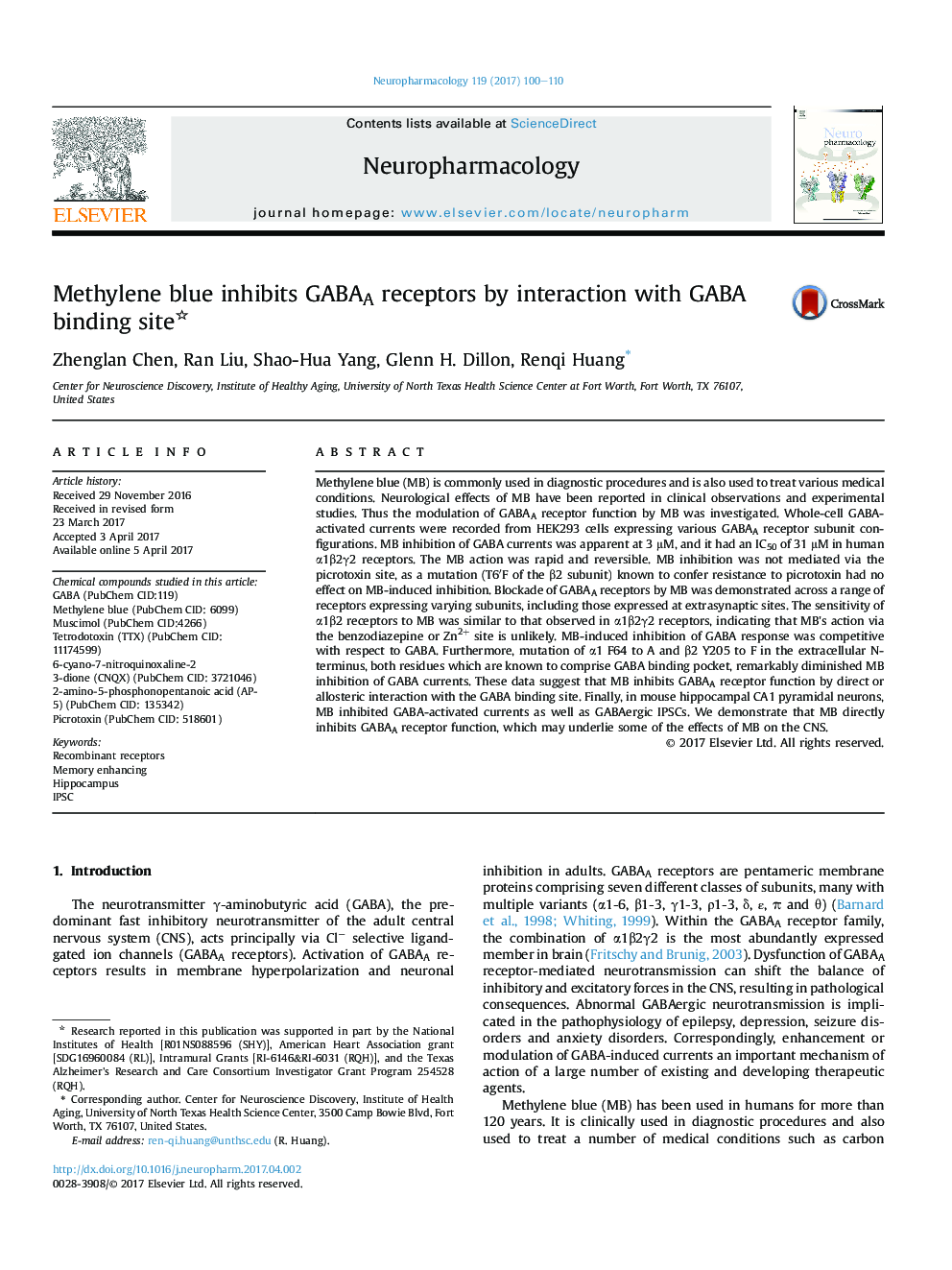| Article ID | Journal | Published Year | Pages | File Type |
|---|---|---|---|---|
| 5548912 | Neuropharmacology | 2017 | 11 Pages |
â¢Methylene blue inhibits recombinant and native GABAA receptors at clinically relevant concentrations.â¢Methylene blue blocks synaptic and extrasynaptic GABAA receptors.â¢The inhibitory action of methylene blue is mediated by interaction with GABAA receptors at the agonist binding site.
Methylene blue (MB) is commonly used in diagnostic procedures and is also used to treat various medical conditions. Neurological effects of MB have been reported in clinical observations and experimental studies. Thus the modulation of GABAA receptor function by MB was investigated. Whole-cell GABA-activated currents were recorded from HEK293 cells expressing various GABAA receptor subunit configurations. MB inhibition of GABA currents was apparent at 3 μM, and it had an IC50 of 31 μM in human α1β2γ2 receptors. The MB action was rapid and reversible. MB inhibition was not mediated via the picrotoxin site, as a mutation (T6â²F of the β2 subunit) known to confer resistance to picrotoxin had no effect on MB-induced inhibition. Blockade of GABAA receptors by MB was demonstrated across a range of receptors expressing varying subunits, including those expressed at extrasynaptic sites. The sensitivity of α1β2 receptors to MB was similar to that observed in α1β2γ2 receptors, indicating that MB's action via the benzodiazepine or Zn2+ site is unlikely. MB-induced inhibition of GABA response was competitive with respect to GABA. Furthermore, mutation of α1 F64 to A and β2 Y205 to F in the extracellular N-terminus, both residues which are known to comprise GABA binding pocket, remarkably diminished MB inhibition of GABA currents. These data suggest that MB inhibits GABAA receptor function by direct or allosteric interaction with the GABA binding site. Finally, in mouse hippocampal CA1 pyramidal neurons, MB inhibited GABA-activated currents as well as GABAergic IPSCs. We demonstrate that MB directly inhibits GABAA receptor function, which may underlie some of the effects of MB on the CNS.
Graphical abstractDownload high-res image (107KB)Download full-size image
